Physical Address
304 North Cardinal St.
Dorchester Center, MA 02124
Subcorneal split
Acantholysis (loss of attachments between keratinocytes)
Dyskeratosis may occur within the granular layer
Direct immunofluorescence demonstrates “netlike” deposition of immunoglobulin (Ig) G and C3 between keratinocytes in upper epidermis
Pemphigus foliaceus is a subcorneal vesiculobullous disorder caused by autoantibodies directed at an intercellular keratinocyte adhesion protein: desmoglein 1 (160 kD). The disease usually presents with superficial crusted erosions upon the face and upper trunk. The superficial nature of the blisters makes them fragile, and upon presentation most patients lack intact bullae.
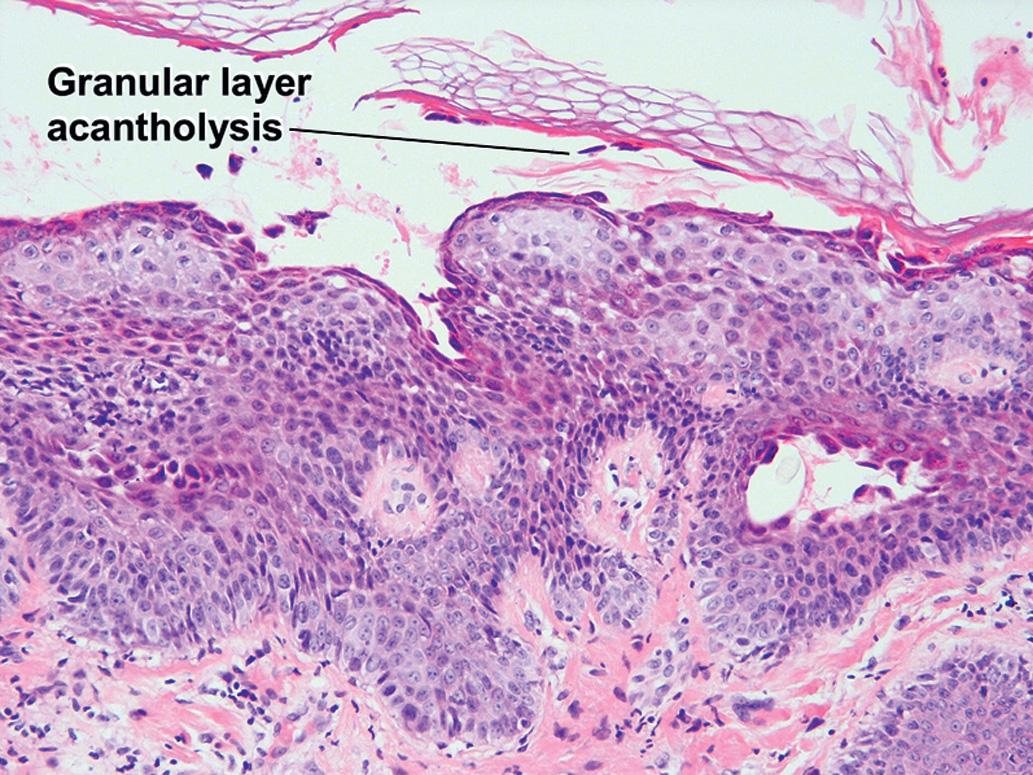
The presence of a subcorneal blister, with acantholytic cells and scattered eosinophils, is highly suggestive of pemphigus foliaceus. Direct immunofluorescence (DIF) is diagnostic and demonstrates intercellular IgG and C3 deposition, primarily confined to the upper half of the epidermis. The split occurs in the granular layer, as in staphylococcal scalded-skin syndrome. Pemphigus foliaceus may demonstrate neutrophils within the vesicle, making distinction from bullous impetigo difficult. A tissue Gram stain may be helpful, but the presence of an impetiginized crust does not wholly exclude pemphigus foliaceus.
Pemphigus erythematosus blends the immunohistologic findings of pemphigus foliaceus with those of lupus erythematosus. Patients often have a positive serum antinuclear antibody (ANA). Immunofluorescence studies demonstrate intercellular deposition of immunoreactants and a “lupus band” of granular immunoreactants at the dermoepidermal junction.
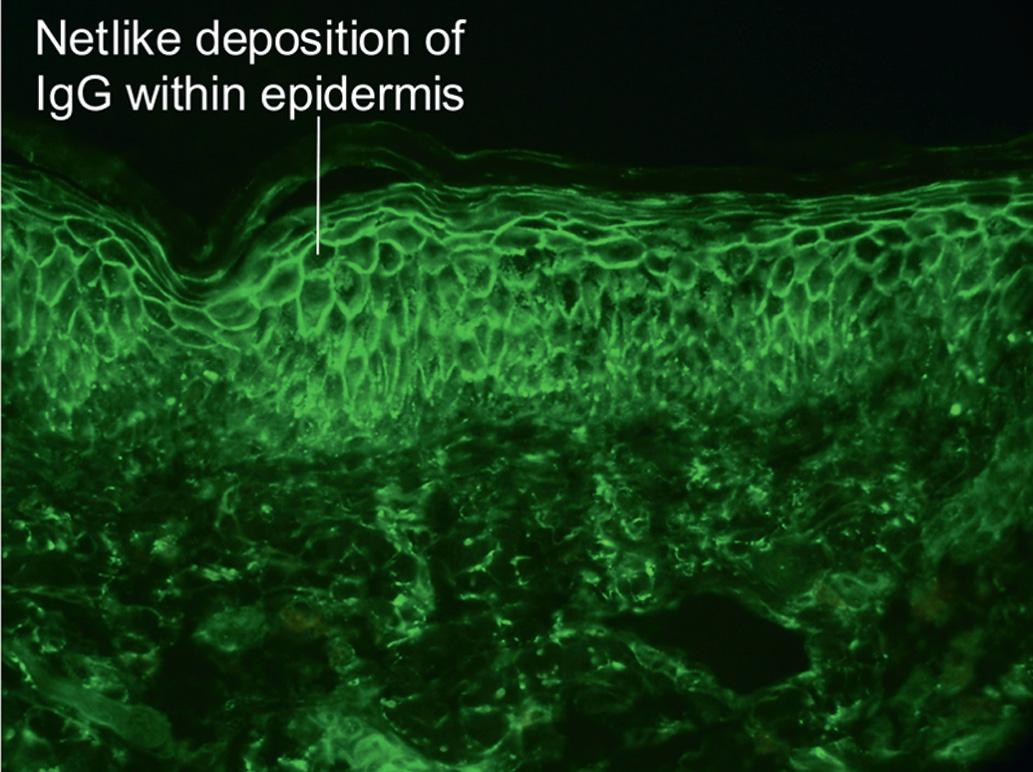
Subcorneal pustule
Pustule “sits” or “floats” upon the epidermis without depressing it
Superficial mixed perivascular infiltrate with occasional neutrophils
Dyskeratosis is uncommon
Immunofluorescence is negative (distinguishing it from IgA pemphigus)
Cases of subcorneal pustular dermatosis with intercellular deposition of IgA have been reclassified as IgA pemphigus. Subcorneal pustular dermatosis may represent a subclass of pustular psoriasis, although mitotic figures within the underlying epidermis, common to psoriasis, are not identified in subcorneal pustular dermatosis. The classic patient is an older woman with annular or polycyclic lesions of the trunk or groin with pustules at the periphery.
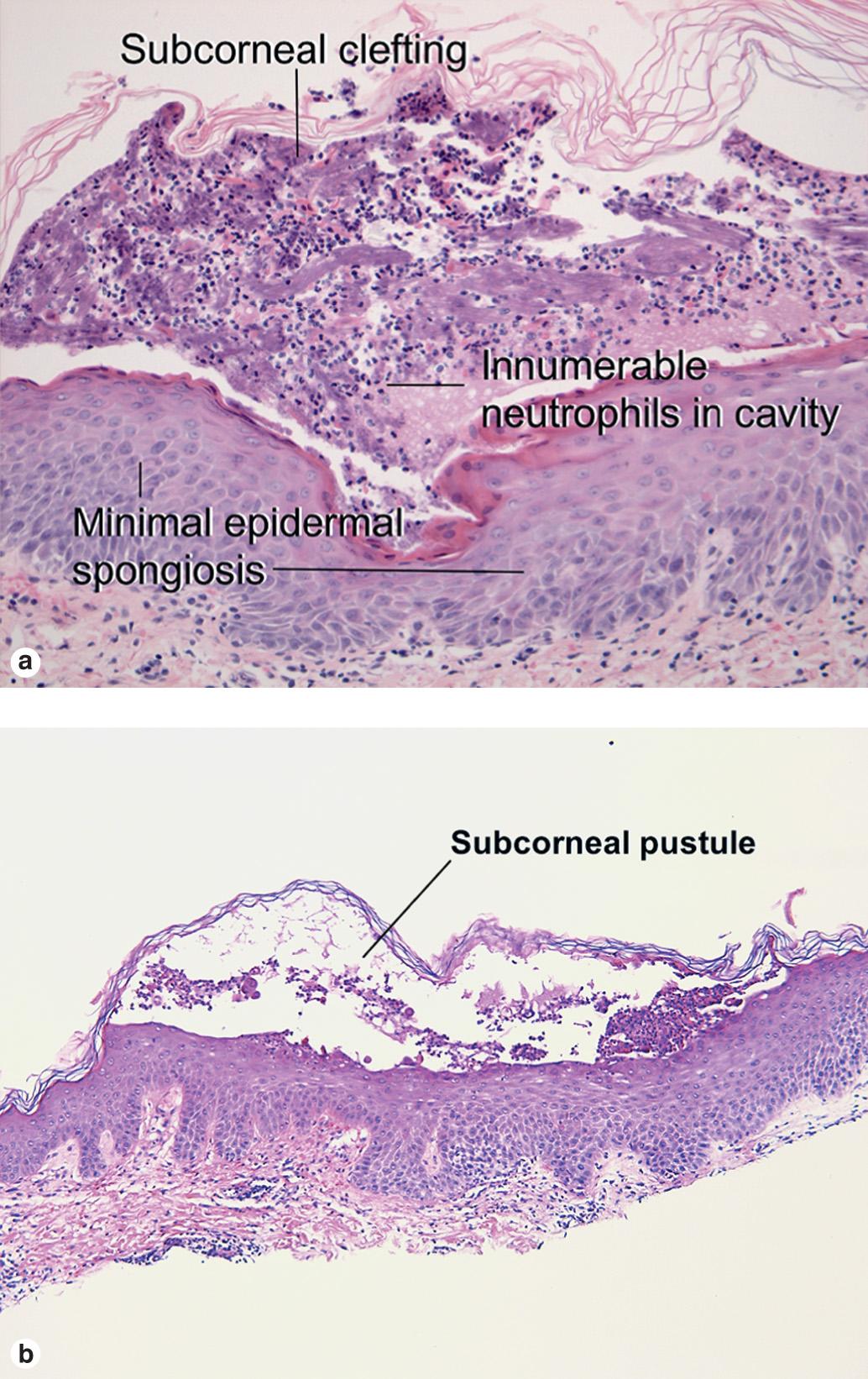
Subcorneal or superficial epidermal pustules
Mild spongiosis in the surrounding epidermis
Superficial mixed infiltrate in an edematous papillary dermis
Occasional eosinophils within the dermal infiltrate
Immunofluorescence is negative
Acute generalized exanthematous pustulosis (AGEP) is an uncommon reaction to exogenous medications. Beta-lactam antibiotics and macrolides are most often implicated, but a myriad of other drug associations have been reported. The presence of eosinophils in the inflammatory infiltrate helps distinguish the condition from pustular psoriasis. Early pustules may be associated with hair follicles or sweat ducts.
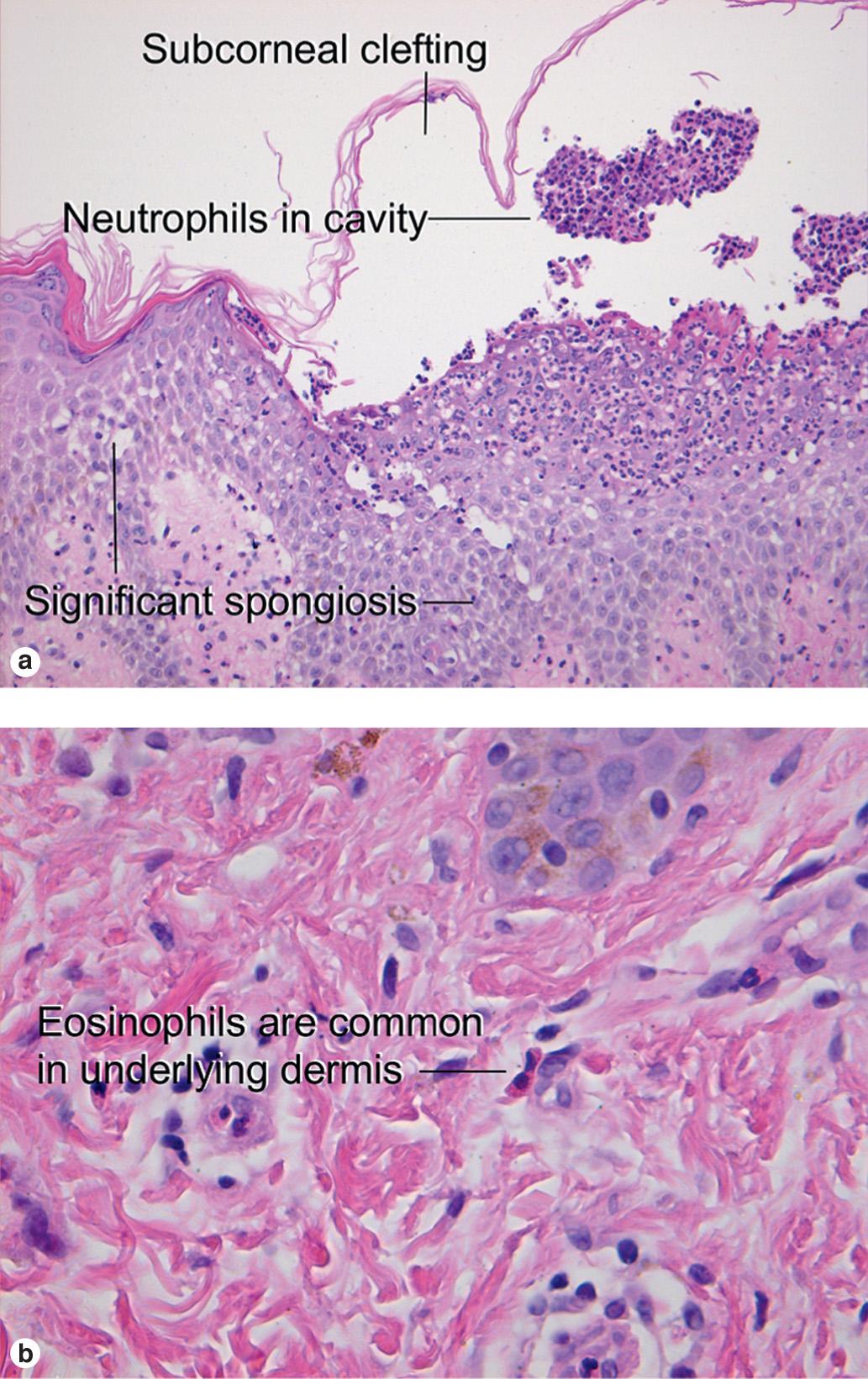
Split immediately above basal layer leaves a “tombstone row” of basal keratinocytes
Tracking of separation down hair follicles (“follicular extension”)
Eosinophils may occur in spongiotic foci or within the blister cavity
Superficial lymphocytic inflammatory infiltrate in dermis
Eosinophils may be seen within the dermal infiltrate
Direct immunofluorescence demonstrates “netlike” deposition of IgG and C3 between keratinocytes in lower epidermis
Pemphigus vulgaris is an intraepidermal vesiculobullous disorder caused by autoantibodies directed at an intercellular keratinocyte adhesion protein: desmoglein 3 (130 kD). The disease presents with erosions of the skin and mucosa. Often the disease begins in the posterior oropharynx weeks before cutaneous lesions are noted. Most patients lack intact bullae upon presentation. Erythematous skin shears easily when lateral pressure is applied (Nikolsky sign).
Clefting above the basal layer, with acantholysis of the remaining basilar keratinocytes, leads to a visual impression likened to “rows of tombstones” sitting upon the dermal papillae. Tracking of the blistering down adnexal structures is often demonstrated. Direct immunofluorescence is diagnostic and demonstrates intercellular IgG and C3 deposition in a “netlike” pattern, primarily confined to the lower half of the epidermis. Pemphigus antibodies can also be measured via enzyme-linked immunosorbent assay (ELISA)–based technology and generally titer to disease activity. DIF studies on plucked hairs have also been recently suggested to monitor for remission/recurrences.
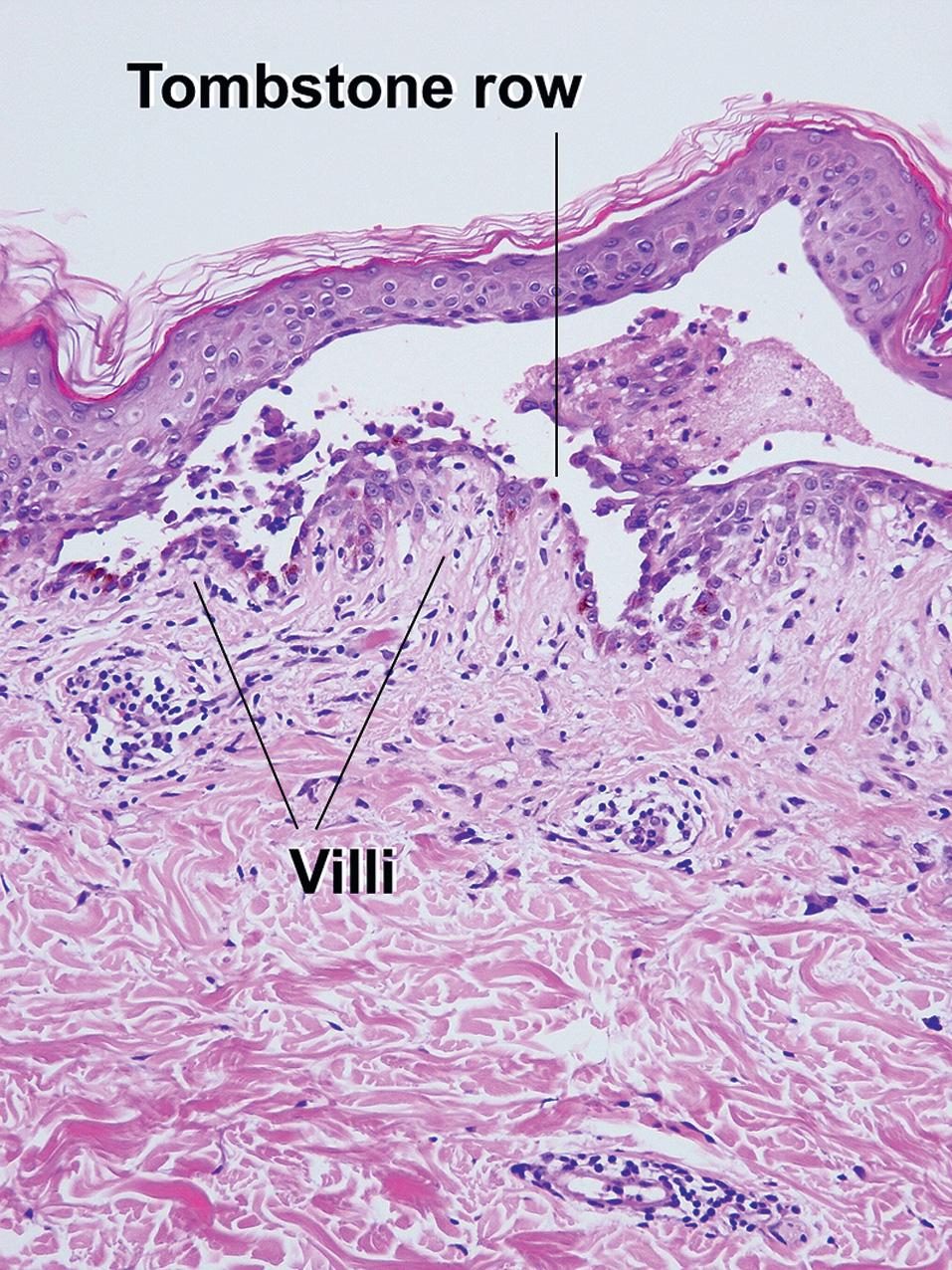
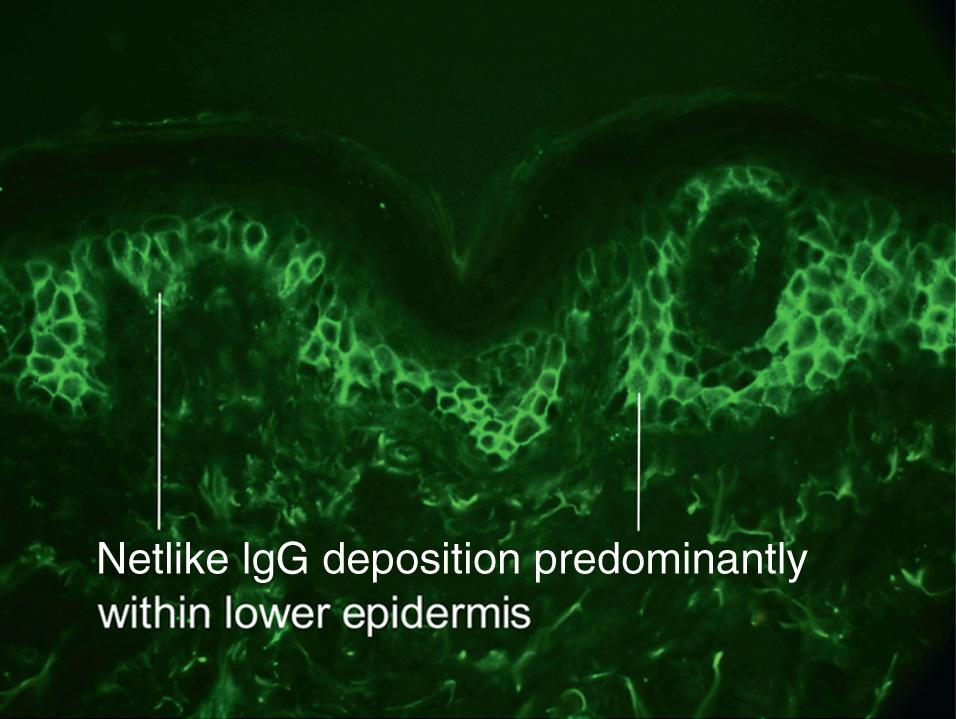
Pemphigus vegetans is a related disorder that demonstrates vegetative cutaneous lesions with epidermal hyperplasia and lesser vesiculation. Suprabasilar crypts of eosinophils may be identified within the acanthotic epidermis.
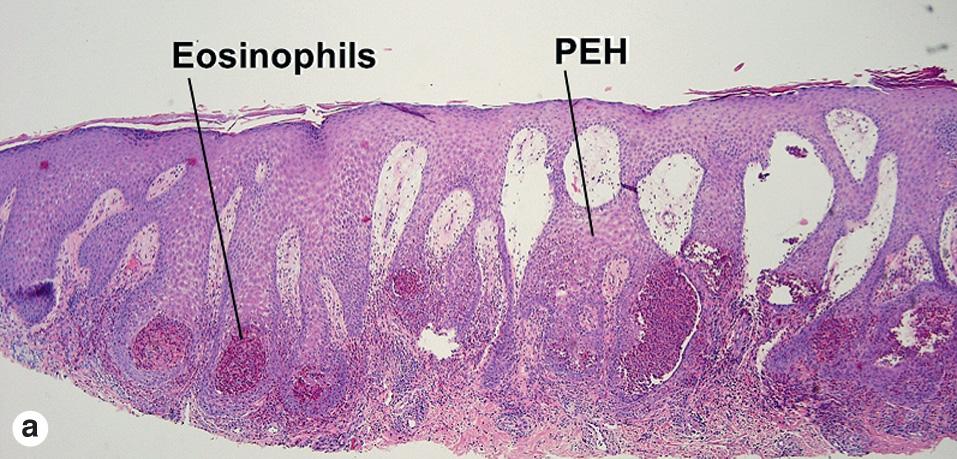
An inherited disorder with defective cell–cell adhesion
Not antibody mediated
Acantholysis at all levels of the epidermis resembles a “dilapidated brick wall”
Acanthosis
Red, dyskeratotic rim surrounds nucleus
Immunofluorescence is negative
Hailey–Hailey disease is an autosomal-dominant, inherited disease caused by mutations in the ATP2C1 gene. This gene encodes for a portion of a calcium pump essential for proper keratinocyte differentiation and adhesion. Skin of the intertriginous areas is most often affected, and the appearance has been likened to “wet tissue paper.” Acantholysis at all levels of the epidermis yields the histologic appearance of a “dilapidated brick wall.” Although the disease itself is not immunologically mediated, superinfection of macerated skin by bacteria or yeast may engender an inflammatory infiltrate in the superficial dermis.
The Hailey–Hailey variant of Grover disease has similar histologic findings; however, in contrast to the broad lesions of benign familial pemphigus, there is less extensive and more focal involvement in Grover disease.
The negative DIF and observed dyskeratosis and follicular sparing in Hailey–Hailey disease allow distinction from pemphigus vulgaris. The acanthosis of benign familial pemphigus is a feature not typically identified in other blistering disorders.
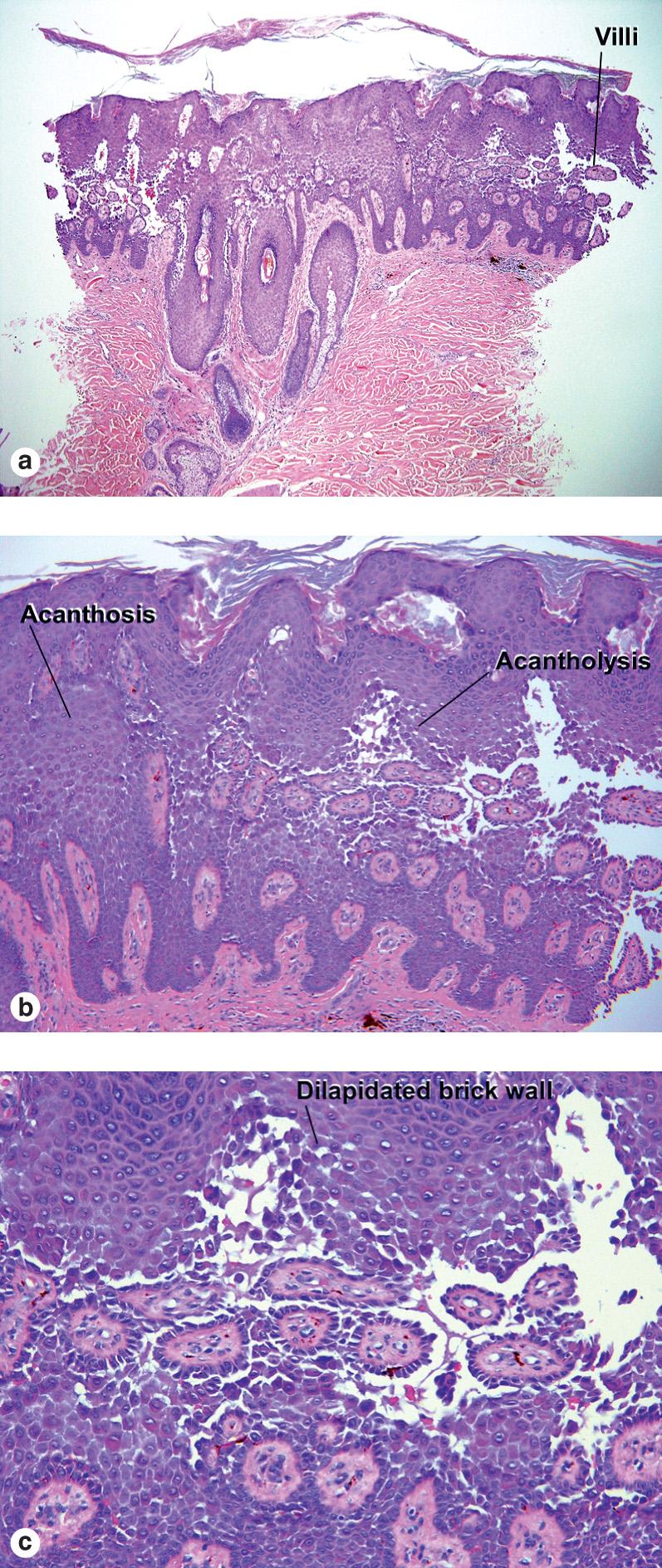
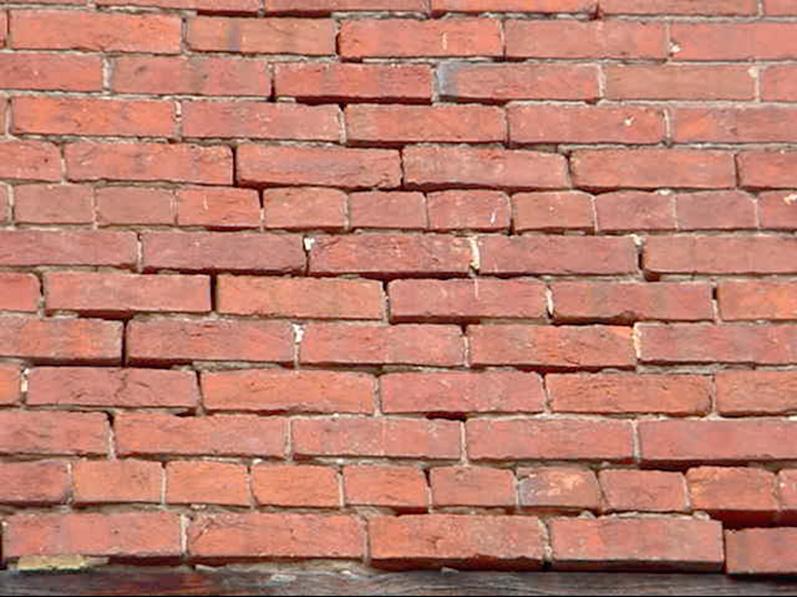
Become a Clinical Tree membership for Full access and enjoy Unlimited articles
If you are a member. Log in here